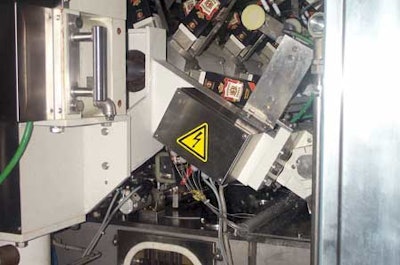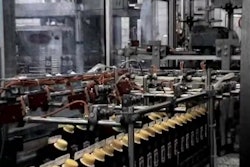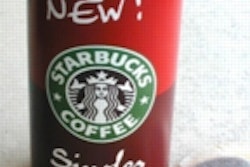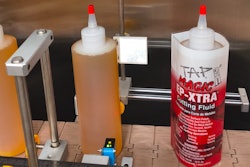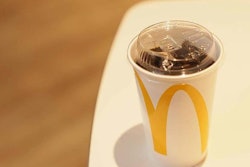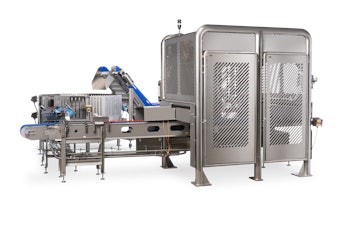The sight of gable-top paperboard cartons filled with vodka made it immediately apparent that this editor was no longer in the United States. In fact, the site was Pfanner’s headquarters and beverage facility in Lauterach, Austria, just across the border from Switzerland.
Pfanner is an Austrian family business that specializes in packing fruit-juice concentrates and ready-to-drink fruit juices. About 70% of its volume is marketed under its own brand. The remaining 30% is from contract packaging, such as the Rebroff vodka being filled on the day of Packaging World’s visit late last summer.
“We fill the vodka and export it to Russia,” says Harald Fink, plant manager at Lauterach. “The company likes the convenience of the spout cap.”
The resealable Pure Cap U spout cap is supplied by Elopak. The three-piece cap includes a linear-low-density polyethylene spout, LLDPE piston, and high-density PE screw cap. It is applied to the skived carton after the carton is filled and sealed. Carton blanks are scored with a circular-shaped pattern where the closure is applied downstream of carton sealing on Elopak’s Pure-Pak® U-S80 A, an aseptic filling machine. The aseptic integrity of the pack is maintained until the consumer twists the cap during opening.
Pfanner almost always uses the machine in the aseptic mode. Vodka is a rare exception. The advantage of using the aseptic machine for Rebruff vodka is that it provides Pfanner’s customer with the same spouted gable-top carton Pfanner uses for aseptic juices.
The U-S80 A is the newest of four filling machines at the Lauterach plant. Running at speeds up to 133 cartons/min, the machine “replaced an aseptic brick carton filler,” says Jodok Metzler, the plant’s production manager. The Elopak machine typically runs on two daily shifts, five days a week. It’s used mainly for 1-L cartons, as well as 750- and 500-mL versions, for nectars, juices, liquid teas, and vodka. The company uses another aseptic filler for paperboard “brick” cartons. There’s also a glass bottling line, and a fourth line used to fill aluminum cans. All beverages, regardless of package, are marketed at ambient temperatures, primarily in Austria, Switzerland, Germany, and Italy.
The process
The three-lane aseptic machine uses Elopak’s Pure-Pak® cartons. From the inside out, the structure includes PE/tie/aluminum/tie/paperboard/ PE. The outside PE layer is reverse flexo-printed, usually in four colors, using ultraviolet inks.
At its infeed side, the aseptic machine is equipped with three horizontal magazines into which operators feed carton blanks. Each of the three lanes functions identically. A spring-loaded device pushes the side-sealed blanks from the magazine where vacuum cups open the blanks.
Mechanical fingers position an open blank onto one of the six mandrels of a wheel. As the wheel turns, each carton bottom area is preheated so that flaps coated with polyethylene will bond when the carton ends are folded in at the subsequent heat-sealing station. Suction cups pull the carton off the mandrel and onto a transport chain that conveys it into the aseptic area of the machine. A 2% solution of hydrogen peroxide and 10-second exposure to UV light sterilizes the carton.
Filling is done next, in two separate stations. The process prevents foaming for some juices. That’s not a factor with vodka, though the filling process remains the same.
After filling, the carton top is folded and sterilized. Again, hot air is blown onto this area of the carton to activate the PE coating and permit effective heat sealing. Cartons are conveyed out of the aseptic area in three lanes to three downstream Elopak cap applicator units. This method permits more room for accumulation compared to diverting cartons from three lanes into one cap applicator.
For each cap applicator, cartons are conveyed into a “pocket” and heat is applied to activate the carton’s outer PE layer and the flange of the closure. The closure is pushed onto the scored circle-shaped area near the top of the carton. The applicator uses compression to create a seal between the carton’s PE layer and the flange of the closure. The aseptic barrier is not broken until the consumer turns the closure during opening, breaking the score on the carton.
“The Pure-Pak carton is a very attractive package,” says Fink. “It’s a package that’s preferred by consumers, and we see more possibilities with it in the future.”
